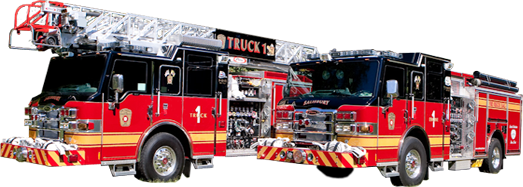Photo Gallery
Hot Tips for Working in the Heat
Health risks rise along with the mercury.Those who must work outdoors in high temperatures—or indoors where processes or inadequate air-conditioning create a steamy hot environment—see a different side of summertime than most. Because heat can cause a range of ailments from discomfort to death, it's essential that you understand the risks and how to protect against them. That means with summer heat and humidity, you need to recognize the possible health hazards of working or playing in the heat, along with precautions for avoiding illness and basic first aid if you, a co-worker, or someone else succumbs to the heat.
Heed these hot tips from OSHA for keeping cool when working or playing outdoors in the heat
- Consider your physical fitness to work or play in a hot environment.
- Work or play in pairs to reduce stress and so that there is some way to keep an eye on each other's physical condition.
- Provide easy access to a supply of safe drinking water and drink plenty of water throughout your shift or exercise.
- Avoid scheduling the heaviest work/play on the hottest days or at the hottest time of the day.
- Alternate work/exercise and rest periods in very hot weather, making sure there is a cool, shady place to take breaks.
- Monitor temperatures on a regular basis.
- Learn to recognize and treat the signs of heat-related illness.
Understand the signs and treatment of heat-related illness:
Heat stressis a common reaction to high temperatures, especially when accompanied by strenuous activity. Symptoms include thirst, fatigue, dizziness, and even difficulty seeing.
What to do: Take a break in a cool place and drink cool water or juice.
Heat crampsare painful muscle spasms in arms, legs, or intestines that are caused by losing salt while sweating.
What to do: Cool down and drink water or juice. Also make sure the diet includes foods that will replace lost salt.
Heat exhaustioncan make a person feel weak and possibly dizzy and/or nauseous. Other symptoms include chills, clammy skin, and profuse sweating.
What to do: Rest in a cool spot (preferably with feet slightly elevated) and drink plenty of fluids. If condition doesn't soon improve, seek medical attention. Take it easy for a few days following an incident, especially if excessive heat continues to be a work factor, and reduce the pace of activity.
Heatstrokeis the most serious type of heat-related sickness and is, in fact, life threatening. Emergency medical attention is required. A victim of a heatstroke stops sweating, causing the body to overheat. Symptoms include hot and flushed skin, poor coordination, and confusion, possibly followed by loss of consciousness.
What to do: Activate the 0-1-1 system. While waiting for the EMTs to arrive, move the person to a cool place, sponge with cold water, apply ice packs or cold drink cans, or immerse in cold water. Offer drinking water only if the person is conscious.
Heat-related illnesses can be very serious. Some of us have no choice but to work in hot environments. However, by using some common sense, and following some of the mentioned recommendations, serious injury from the heat may be easily avoided. For more information, visit http://safety.blr.com/training/workplace-safety-training-sessions/employee-health/heat-and-cold/Hot-Tips-for-Working-in-the-Heat/.




